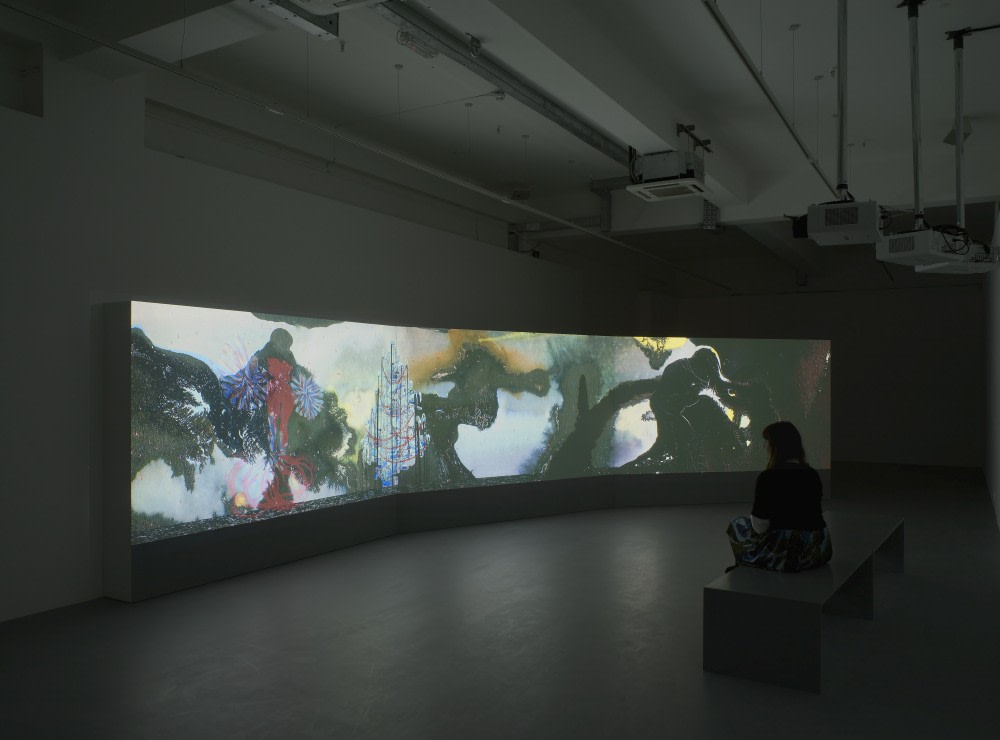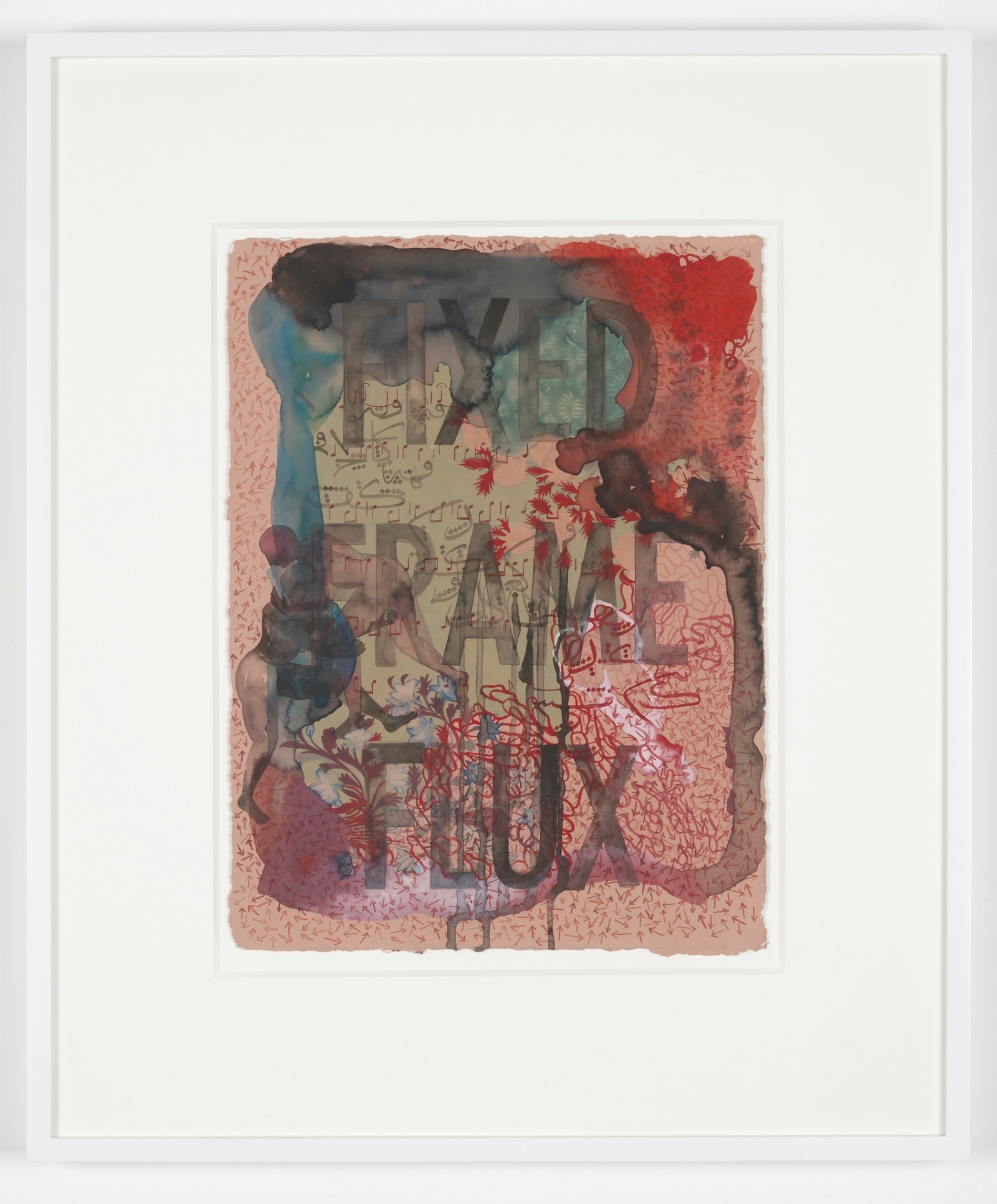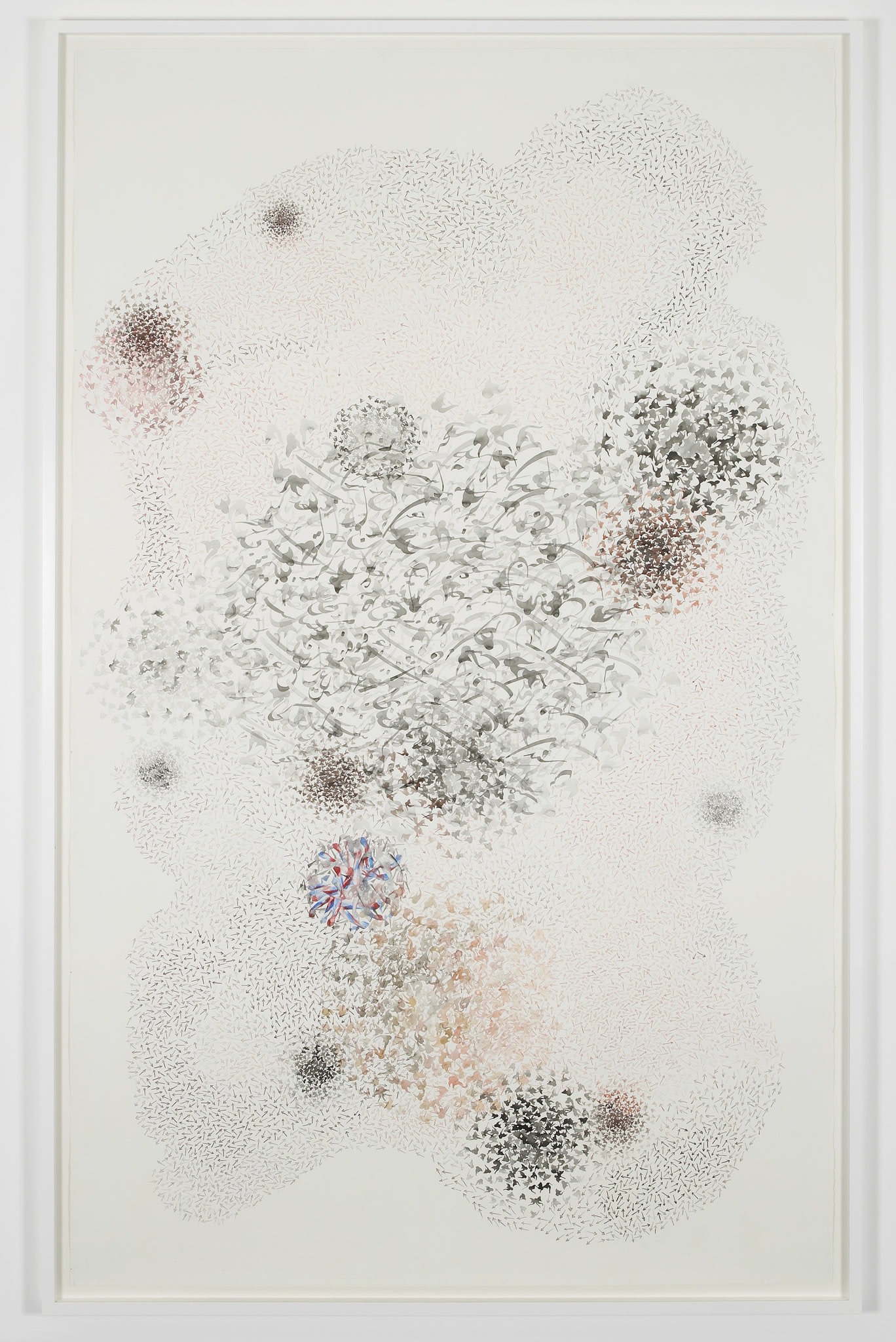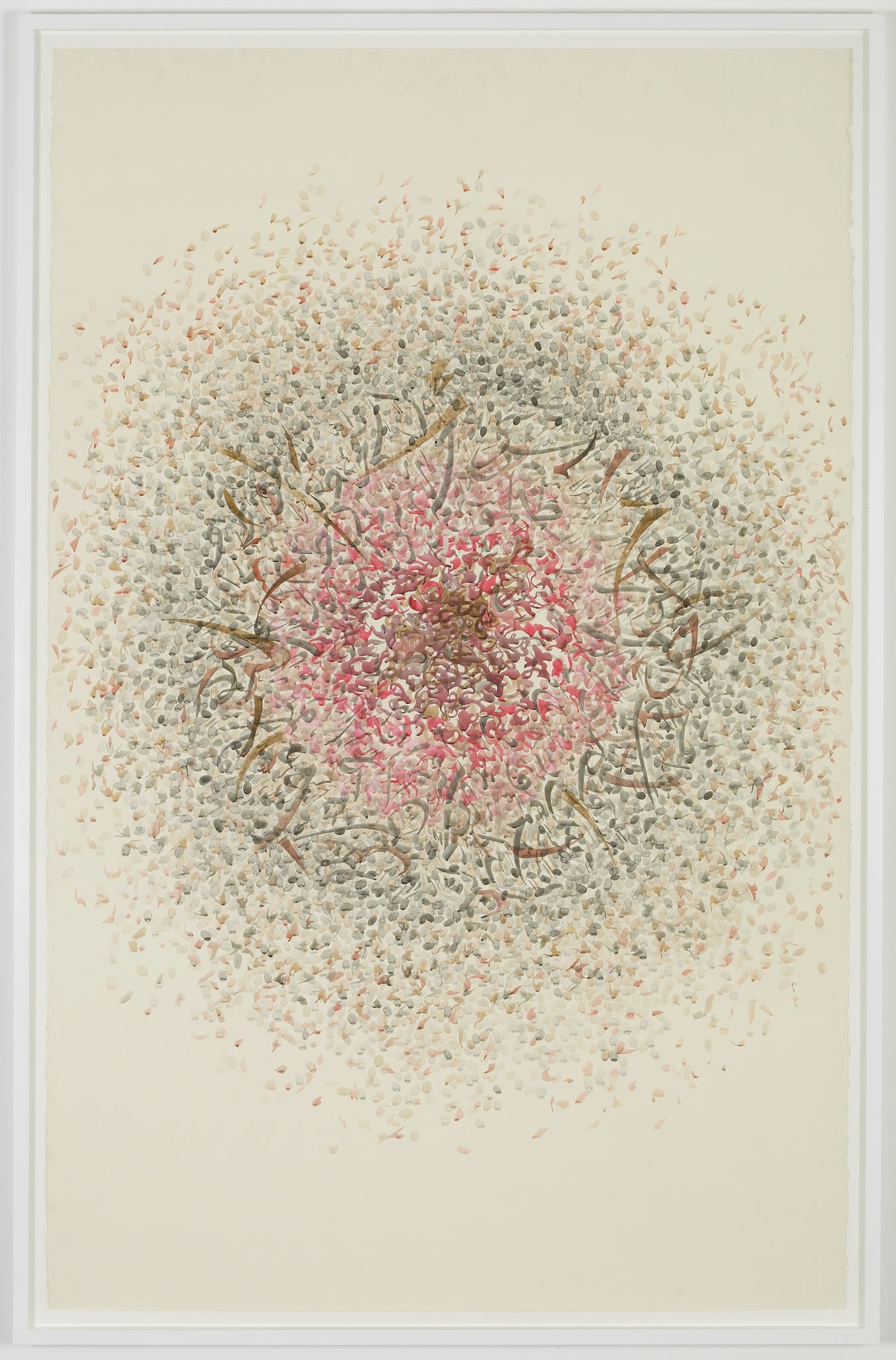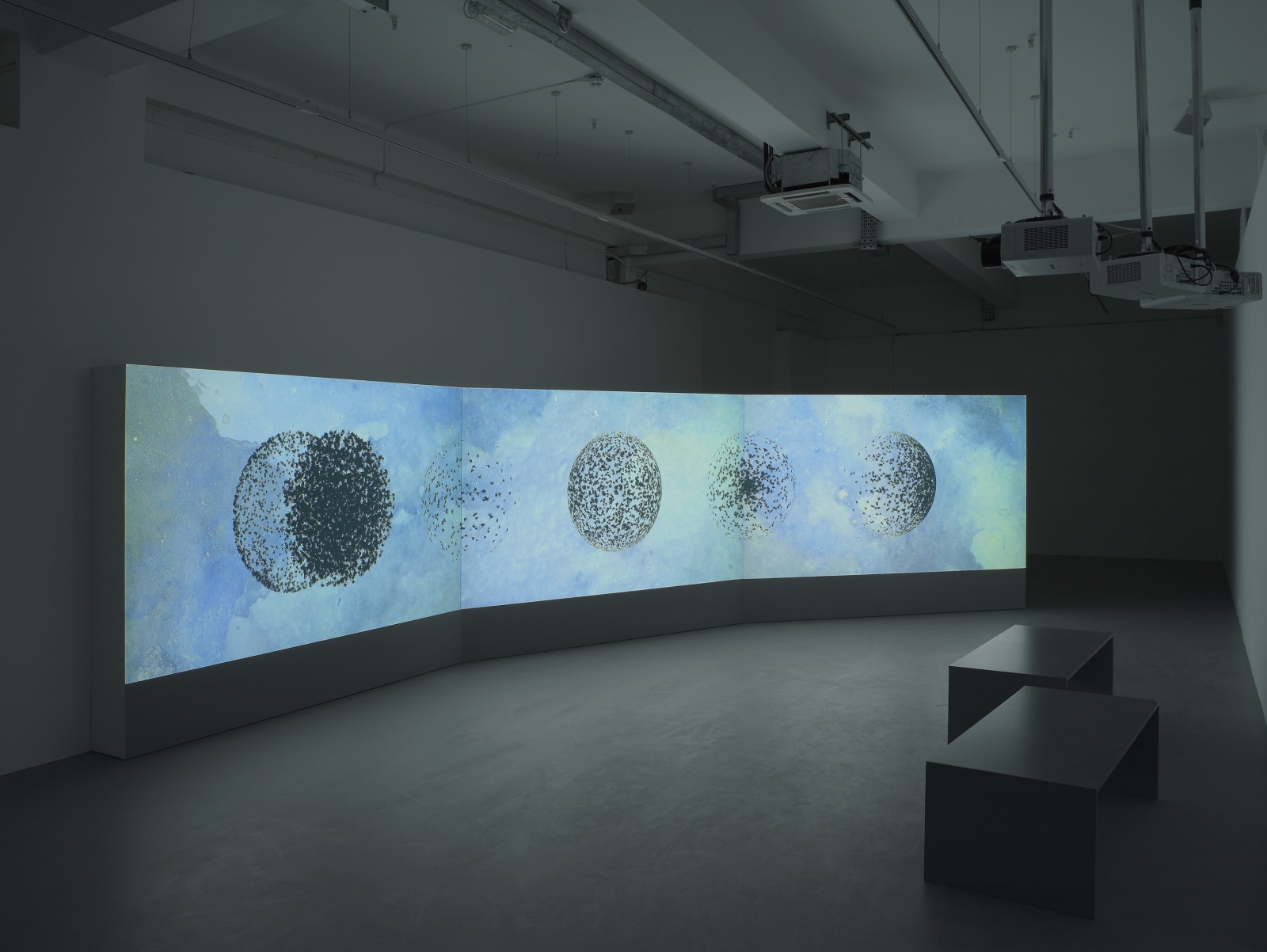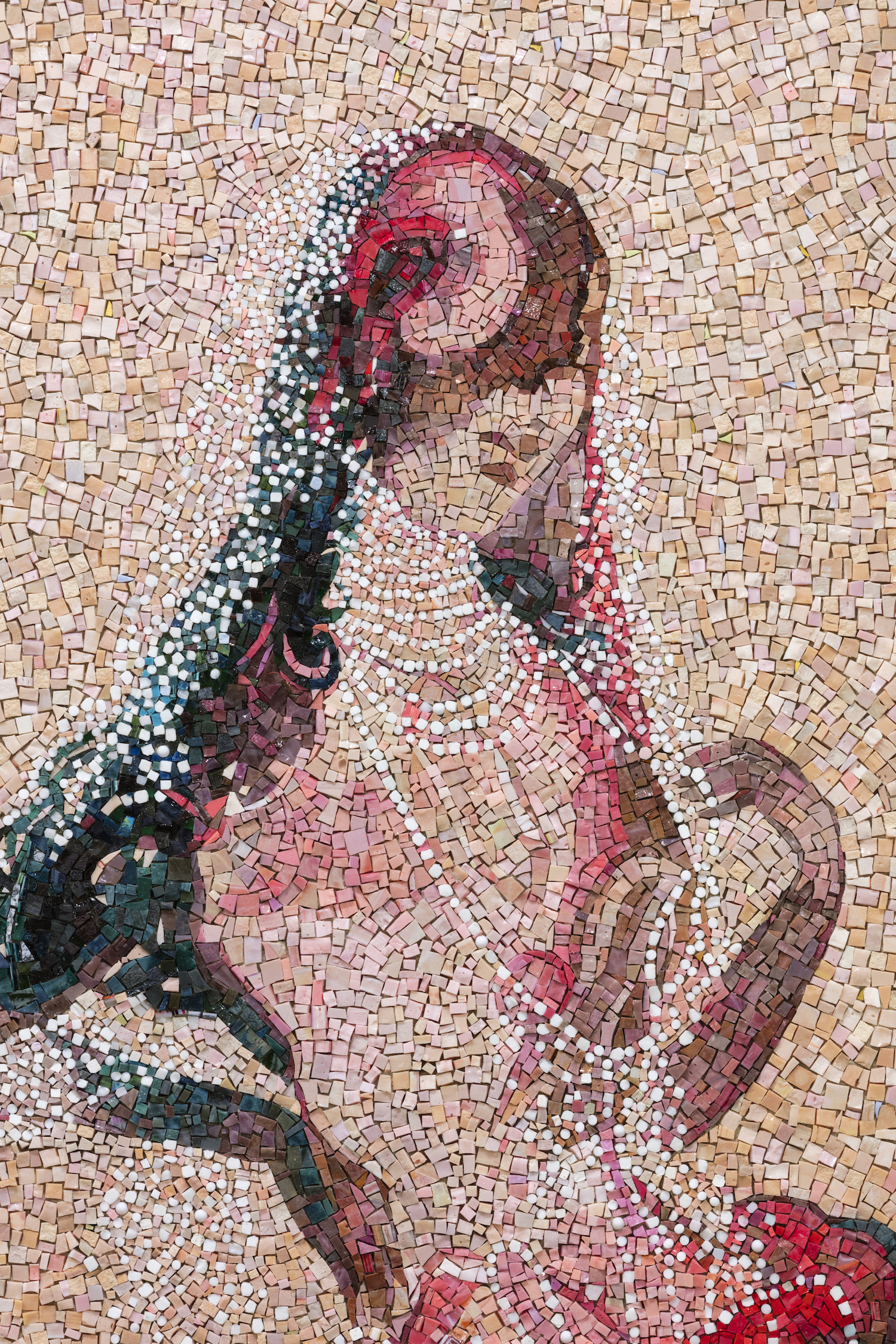Overview
Internationally recognised, Pakistani born American artist, Shahzia Sikander is best known for her experimentation with the formal constructs of Indo-Persian miniature painting in a variety of formats and mediums, including video, animation, mural and collaboration with other artists.
Over the years, she has pioneered an interpretive and critically charged approach to the anachronistic genre of miniature painting. Underpinning the work is also Sikander's interest in paradox, societies in flux, and formal and visual disruption as a means to cultivate new associations.
For her second solo show at the gallery Shahzia Sikander is presenting a new 3-channel animation work, which will also preview at the Sharjah Biennial in March 2013. Accompanying the animation are 4 large scale drawings and 4 smaller works on paper.
Focusing on the Strait of Hormuz and the area's historical power tensions, the animation Parallax is inspired by the idea of conflict and control. Drawn elements come together to create dissonance and disruption. Abstract, representational and textual forms coexist and jostle for domination. Spheres made of hair spin and sing, Christmas trees made of valves and spools spout, while undulating colour fields create pitch and fervour and large swaths of static noise erupt into flocks. Human voices recite and narrate, creating tension and rhythm while oscillating between audible texts and the environmental sounds. Visual vocabulary is culled from drawings and paintings to construct the animation, giving the motifs and symbols a shifting identity as they come together to re-create meaning within the digital space.
In her current practice, drawing and animation are interlinked and inform each other. Ideas housed on paper are put into motion. Patterns of thinking and movement are worked out via drawing. Moving between these two mediums is a way for her to see and convey multiple sides to a situation. The resulting shift in perspective functions as a vantage point highlighting the distance between two locations namely drawing and animation. Translation thus emerges as a concept. Text embedded in the drawings also functions as a tool to further explore ideas around translation, as in translation's relationship to a tradition, and tradition with all its inherent redactions.
In the drawings titled 'Redaction', 'Mirage' and 'I am the exact imitation of the original' the play on words implies a certain narrative while the meaning is kept in flux. Is original a construct? What is the distance between the original and its translation and at what point does the translation become an original. The distance thus becomes the interim, the interstice, the pause, the silence, the interval, the separation, the lacuna or the gap between two positions. It is exactly this space that the drawings and the animation tend to explore.
Shahzia Sikander was born in 1969 in Lahore, Pakistan. She received her B.FA from the National College of Arts, Lahore, Pakistan and an M.F.A from the Rhode Island School of Design, Providence. Major solo exhibitions of Sikander's work include Linda Pace Foundation, San Antonio (2012), Mass Art, Boston (2011) San Francisco Art Institute (2010) Cooper Hewitt National Design Museum, New York (2009) Para/Site, Hong Kong (2009); Ikon Gallery, Birmingham (2008); daadgalerie, Berlin (2008); Irish Museum of Modern Art, Dublin (2007); Museum of Contemporary Art, Sydney (2007); Miami Art Museum, Miami (2005); Aldrich Contemporary Art Museum, Ridgefield (2004); The San Diego Museum of Art, San Diego (2004); Hirshhorn Museum and Sculpture Garden, Washington D.C (2000), Whitney Museum of American Art, New York (1999) and the Renaissance Society, Chicago (1998).
Sikander has been the recipient of numerous awards, grants and fellowships, including the inaugural Medal of Art by the US State Department (2012) the John D. and Catherine T MacArthur Foundation Achievement award (2006-2011); the National Pride of Honor by the Pakistani Government (2005), the Joan Mitchell award (1998-999), and the Tiffany foundation award (1997). In 2006 Sikander was a named a Young Global Leader by the World Economic Forum. Shahzia Sikander lives and works in New York City.

